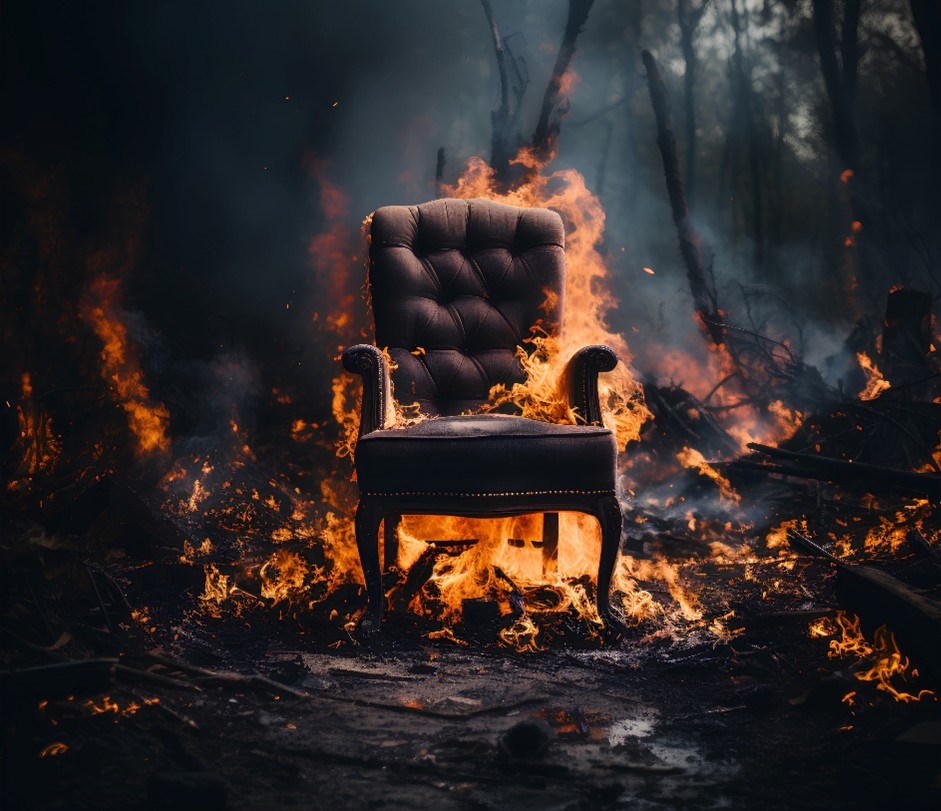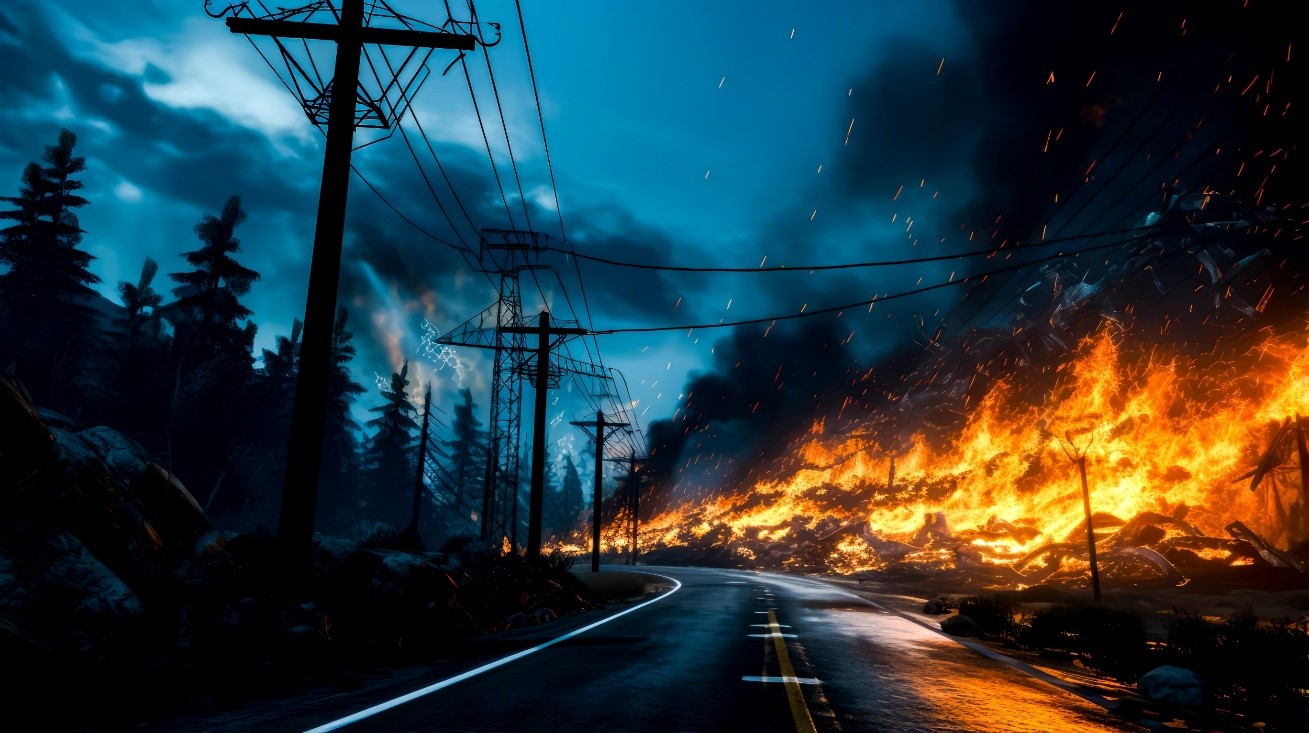Arman Gabay is a Co-Managing Partner at Charles Company, a real estate development and investment firm. In the following article, Arman Gabaee delves into the profound influence these fires have on the Golden State's real estate landscape. Beyond the charred landscapes and immediate devastation, the reverberations are felt throughout the property market, reshaping how Californians approach home, and business ownership.
California, often celebrated for its picturesque landscapes and thriving real estate market, faces a daunting adversary: wildfires. These fiery disasters not only threaten lives and ecosystems but also cast a shadow over the state's real estate industry.
Arman Gabay says that as wildfires become increasingly frequent and intense, the impact they have on real estate must be taken into consideration. Below, Arman Gabaee looks at the effects of these natural disaster have on property values, as well as techniques for building more resilient homes, businesses, and communities.
Arman Gabay Explains the Property Damage Aspect
Over the past five years, wildfires have resulted in approximately
$22 billion in property damage, with California alone accounting for over $18.7 billion of these losses.
The impact of California wildfires on property value is estimated to be about $4.6 billion in insured losses alone, significantly driving down the median home price of $507,700 within the state.
Arman Gabay explains that as climate change intensifies and urban areas encroach on fire-prone regions, the looming threat of devastating fires grows. Implementing preventive measures like wildfire-resistant home designs, creating defensible spaces around homes and businesses, and adopting sustainable development strategies, both residentially and commercially is imperative to safeguarding communities and properties from destruction.
Property Values After Wildfire Devastation
The relationship between wildfires and property values can be complex, with some properties near the fire perimeter gaining value. Those located within one mile of a burn area had an
appreciation rate of 5.1%, while those situated 1 to 5 miles away saw a 7.21% gain evidence that not all close-by properties suffer negative impacts from fires.
On the other hand, longer-term effects are seen when homes or businesses have views of burning areas as this typically leads to sustained drops in prices for these locations beyond what would normally occur without disaster proximity concerns being present.
Risks and Real Estate
As wildfires continue their relentless surge across California, they not only scorch the land but also fuel a housing crisis, driving up demand for homes in fire-prone areas while decreasing availability. Understanding the dynamics behind this surge is paramount, with climate change and urban expansion into these regions being key catalysts. Arman Gabay delves deep into this critical issue, shedding light on its far-reaching implications for the state's real estate landscape.
Residential Development in Fire-Prone Areas
Recent years have seen a notable surge in the building of dwellings near forests and grasslands, regions that are most prone to wildfires. This expansion of residential development has exposed more homeowners to potential fire danger as well as intensifying the strain on insurance companies and firefighting efforts.
Arman Gabaee notes that these risks become increasingly evident when looking at properties situated within what is commonly known as the wildland-urban interface - places that typically contain both natural vegetation areas plus developed housing developments side-by-side with one another.
 Housing Market Resilience Amid Wildfires
Housing Market Resilience Amid Wildfires
However, California's housing market remains strong in spite of these fires. Prices and rental demand are either staying level or rising in many parts of the state, including those affected by fires.
Trends surrounding home prices within fire-impacted regions have been stable too an indication that it has taken this tough situation into consideration and adjusted accordingly while still preserving overall stability in its marketplace operations.
Home Price Trends in Fire-Affected Regions
Arman Gabay explains that the effects of wildfires on the real estate market have not been drastic, with home prices remaining stable and housing demand still present. This resilience is due to factors such as renters looking for accommodation, sustainable building practices in residential areas, and fireproof building designs being put into place.
Despite property damage taking a toll from these disasters, California's overall real estate climate remains unfazed by any significant detriment caused by past disasters. Instead, it looks like rising costs are the only current hindrance when buying or leasing a residence within this area.
Rental Housing Demand After Disasters
Arman Gabaee says that following a disaster, the need for rental housing can surge. This rise in demand often causes an increase in prices due to pressure on limited resources such as the housing stock and available rental options. Financial assistance might be accessible, but it may not cover costs associated with these price movements or reflect their full effect on overall house pricing.
Consequently, this could lead to strain placed upon the already tight budgets of renters seeking accommodation following disasters.
Factors Contributing to Market Stability
Arman Gabay says that several key elements such as shifts in government action, economic indicators, business performance, interest levels, innovations, and global events all have an effect on market equilibrium.
Amid the pandemic, we witnessed a remarkable surge in house prices driven by the adoption of social distancing measures, the rise of remote work opportunities, and a significant migration from major cities in pursuit of residential havens.
It is crucial for property owners, lenders, and those responsible for governance-related actions to understand these factors so they can maintain stability regarding wildfires or any other disasters affecting the housing market landscape.
The Role of Fire Hazard Severity Zones in Real Estate Decisions
Real estate decisions require careful consideration of
Fire Hazard Severity Zones (FHSZs), which measure the potential intensity of a wildfire in an area and thus affect property values, insurance premiums, etc.
Being aware of FHSZ implications is key to homeowners making wise choices on buying or selling property as well as devising strategies for minimizing fire risks. Understanding how these zones may influence purchasing real estate can help people take proper precautions when making such transactions.
Types of FHSZ and Their Implications
In California, FHSZ designations can range from Moderate to Very High. For over 15 years now there has been an overall decrease in dwellings built in Very High zones. This does not entirely eliminate wildfire risks since even buildings located within moderate areas could still be affected by events such as what happened with the
LNU Lightning Complex fires which had impacts on all three levels: Very high, High, and Moderate hazard severity zones.
Strategies for Building Resilient Homes and Communities
Arman Gabaee reports that wildfire-resistant building designs, defensible spaces, and sustainable residential development practices can all contribute to creating more resilient homes and communities. By understanding the strategies of these measures, home and business owners can ensure they are protecting their investments against wildfire risks while also helping preserve a brighter future for their community in terms of sustainability.
Wildfire-Resistant Home Designs
Building a wildfire-resistant home in California is estimated to cost between
$2,800 and $27,100. To reduce the likelihood of property damage, homeowners can incorporate various fire-resistant components into their designs which include:
- Detached structures
- Class A roofing materials
- Walls made from ignition-resistant building materials
Forming an effective defensible space around the home or other structures can add an extra layer of defense.
Defensible Space and Landscaping
The purpose of a defensible space is to create an effective barrier against the spread of fire and its potential damage. This includes managing vegetation by reducing flammable plants, keeping adequate spacing between them, as well as utilizing materials that are more resistant to heat and smoke production to mitigate any intensity from a possible blaze.
Lessons Learned from Past Wildfires
Arman Gabaee notes that addressing both the financial burden placed upon owners of these properties while implementing preventative strategies could help lessen any large-scale damage caused by catastrophic events such as wildland blazes.
Rebuilding Process and Challenges
Rebuilding homes can be a challenging process, especially for California residents. This is due to several issues they may face such as the need for EPA supervision in toxic waste clean-up operations, rising interest rates and construction costs along with limited access to mortgage credit resulting from affordability constraints.
To successfully navigate this rebuilding journey, it's essential that homeowners are aware of these challenges beforehand so that they can plan accordingly. An acute shortage of construction workers must also be considered when planning any repairs or renovations on their home projects.

Financial Burdens
Arman Gabaee says that reconstruction costs, lost wages, and increased insurance premiums can all lead to considerable monetary losses for homeowners after a wildfire. It is paramount that these financial issues are addressed in order to allow them the means of recuperating from such an event. Understanding the exact extent of this financial damage along with seeking out help when needed will provide greater ability to manage potential repercussions resulting from these disasters.
Summary
In conclusion, the impact of wildfires on California real estate is a multifaceted challenge that requires comprehensive solutions. Understanding the interplay between climate change, residential development, commercial building, and mitigation strategies is essential for safeguarding property values and the well-being of home and business owners in wildfire-prone areas. As California grapples with this ongoing crisis, the real estate industry must adapt and innovate to thrive in an increasingly volatile environment.
 Housing Market Resilience Amid Wildfires
Housing Market Resilience Amid Wildfires